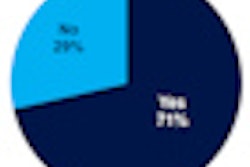The Interdisciplinary Comprehensive Arm Rehabilitation Evaluation (ICARE) project is being conducted to improve outpatient therapy for arm paralysis that can occur after a stroke. The phase III, randomized, controlled trial is investigating the effectiveness of the Accelerated Skill Acquisition Program, an evidenced-based upper-extremity rehabilitation program.
Because imaging the brain identifies the severity of the stroke lesion, researchers can analyze images to perform correlations between the size of the lesion and the rehabilitation system.
Ximing Wang, a doctoral candidate at the Viterbi School of Engineering at the University of Southern California, and colleagues have developed a Web-based system for efficiently collecting, storing, and analyzing data and supporting teleconsultation among the participating centers.
The system consists of a database, a file storage system, HIPAA-compliant anonymizing software, a Web-based graphical user interface, a thin-client image viewer, and a lesion quantifying tool. It is being used to manage the images of more than 160 patients to date.



















